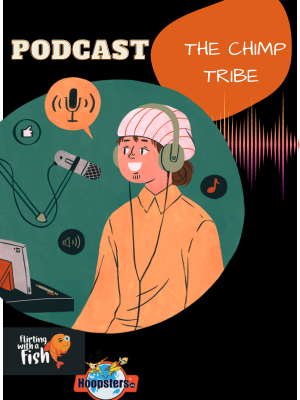
|
WHAT IS AUTISM SPECTRUM DISORDERsource : WWW.WHITESWANFOUNDATION.ORGQ : What is Autism Spectrum Disorder (ASD)?A : Autism spectrum disorder (ASD) or Autism is an umbrella term for a group of developmental disorders that are neurological in origin and cause social, communication and behavioural challenges. ASD is the third most common developmental disorder. It is mainly characterized by impaired social interaction and communication and the presence of repetitive behaviours or restricted interests. Children with ASD may also have their sensory sensitivity affected i.e, they may be under or over-sensitive to certain senses (eg. loud noises, certain fabrics etc) Q : What causes ASD? AA : Experts are still trying to find the exact cause of autism but research indicates that it may be caused by a combination of genetic, biological and environmental factors. Q : What are the disorders that fall under the autism spectrum? A : Here is a brief overview of disorders that fall under the autism spectrum: Autistic disorder: A child is diagnosed with autism when he or she has all the signs of symptoms of ASD. Asperger's Syndrome: Referred to as high functioning Autism, it is characterized by significant issues with social/emotional skills and obsessive focus on certain topics. There is no language or cognitive development delay. Pervasive Developmental DisorderNot Otherwise Specified (PDD NOS): PDD is often referred to as Atypical Autism because it is diagnosed when a child exhibits some but not all characteristics of autism. For instance, if a child exhibits speech delay and certain repetitive behaviours—he would most likely get a diagnosis of PDD (NOS) Rett Syndrome: Rett Syndrome is a rare and severe disorder that is linked to a defect in chromosome X, and therefore it mostly affects girls. Rett Syndrome is characterized by a normal period of development followed by a slow regression in skills, often loss of communication skills and loss of purposeful hand movements. Childhood Disintegrative Disorder: This is a very rare disorder where there is a normal development in all areas initially and the onset of regression of skills happens much later than in other disorders of the spectrum. Children with Childhood Disintegrative Disorder experience loss of skills across all (language, social, behavioural and motor) development areas. Earlier, each condition (autistic disorder, pervasive developmental disorder not otherwise specified (PDD-NOS), and Asperger syndrome) was diagnosed separately but now, these conditions are grouped together and are called autism spectrum disorder. |

|
SYMPTOMS AND SCREENING OF ASKsource : WWW.WHITESWANFOUNDATION.ORGQ : What are the signs of ASD?A : Any child on the autism spectrum will have difficulties in three main areas: • Social interaction (difficulty in building relationships, etc) • Social communication (difficulty in verbal/non-verbal communication, for instance, body language, gestures, etc) • Social imagination (difficulty in the flexibility of thought, organizing, etc) • There may also be problems with the development of motor skills and the presence of unusual repetitive behaviours such as hand flapping, rocking, etc. Q : How can a child be screened for ASD? A : Screening is only to rule out the possible presence of a developmental delay and professionals may use screening tools such as M-CHAT-R/F to assess the risk for ASD. Screening is usually followed by a detailed evaluation and assessment. Earlier identification of the condition can facilitate earlier intervention and more favourable outcomes for the child in the long term. Here is an age-appropriate checklist (Credit: Com DEALL) to help you self-screen your child. You can use this to know if your child is meeting the right developmental milestones and then discuss it with a developmental paediatrician, child psychiatrist or clinical psychologist. Please note that this checklist is not a substitute for a professional assessment. Q : How is ASD identified? A : There is no single medical or genetic test to identify ASD. However, professionals may carry out an evaluation or assessment using diagnostic tools such as Autism Diagnostic Observation Schedule (ADOS) or Autism Diagnostic Interview-Revised (ADI-R) to identify ASD. The child will be evaluated across a range of skill development, including communication, social, motor and cognitive development. In some cases, the child may show signs of autism early on. In some cases, ASD is usually marked by a period of apparently normal development up to the age of 2 to 2.5 years followed by a loss of acquired skills in certain areas. This is referred to as ‘autistic regression. Many children with ASD may also have other medical or psychiatric conditions and this is referred to as comorbidity. Conditions that are commonly comorbid with autism are ADHD, anxiety, depression, sensory sensitivities, Intellectual Disability (ID), Tourette’s syndrome and a differential diagnosis is done to rule them out. |

|
UNIQUE STRENGTHS OF CHILDREN WITH ASDsource : WWW.WHITESWANFOUNDATION.ORGQ : What are some unique strengths of children with ASD?A : Children with autism have trouble relating and interacting with the world around them. However, they may also possess unique strengths which may help them thrive in their chosen careers later on. Some areas in which children with autism commonly have average or above-average skills are • Specialist knowledge in a particular area • Good visual and spatial memory • Methodical and organized • Ability to understand abstract concepts • Problem-solving/ logical reasoning |

|
DEALING WITH CHILDREN WITH ASDsource : WWW.WHITESWANFOUNDATION.ORGParents or guardians go through enormous stress and can be quite distraught when they know that their child is diagnosed with autism. Many parents, especially mothers quit their jobs to become full-time caregivers for their children. A lot of adjustments happen at home, siblings learn to adapt their life around their brother or sister who has been identified to have autism, family members chip in with more support, activities and plans are made keeping the child's interest in mind, and so on. In short, raising a child with autism brings with it a unique set of challenges. However, when armed with the right knowledge, parents or caregivers can make better choices for the child. In this situation, as a parent and caregiver, you can: • Learn as much as possible about autism. Participate in training programs where you can learn about how you can use different interventions. • Plan and provide a regular routine for all the daily activities. • Seek professional help. You may also need counselling to be able to cope with the situation. • It is but natural that only parents of children with special needs can completely understand what other such parents go through. Join support groups and connect with other parents of children with autism. • Take time for yourself. Take care of your physical and emotional health. |

|
UNDIAGNOSED AUTISM IN ADULTHOODsource : WWW.WHITESWANFOUNDATION.ORGAutism Spectrum Disorders (ASD) include all the disorders which affect one’s ability to communicate, understand language, and develop social skills. Autism is generally spoken about in the context of children. The symptoms of autism can be identified at the age of 12 months but is usually formally diagnosed only at the age of three. Autism affects about 1 in 500 people in India and is more common than Down syndrome. Autism manifests in different degrees – mild, moderate and severe.In some cases, if the symptoms are very mild, they may sometimes go undiagnosed. These symptoms may then cause problems in social interaction later in life. Following are some symptoms present in adults who have not been diagnosed in childho od. • One reason is their inability to understand non-verbal cues and inability to communicate emotions. They may not have strong friendships and romantic relationships. • Behavior and language: Adults with autism characteristically have repetitive behavior and language that others around might perceive as odd. They tend to repeat their words and sentences.. Behaviorally, they might have repetitive movements like rocking on a chair or flapping of the hand. • Attention problems: Adults on the ASD have a very short attention span. They have problems sustaining attention on one task and forget things quickly. • Processing of emotions: They have huge problems in empathizing with others because they aren’t able to understand emotions and may have difficulty in relating to them. • Difficulty adapting to changes: Adults with autism have difficulty adapting to change. They get anxious and distressed even if there is a small change in their normal routine. • Verbal problems: They have problems in both communicating as well as in understa nding others. They are not skilled at understanding non-verbal cues and their interpersonal relationships suffer as a result. If you or anyone you know exhibits these symptoms, it is best to refer them to a specialist. Though autism is primarily a childhood disorder, when left undiagnosed in the early years, it can cause problems later in life. |



























